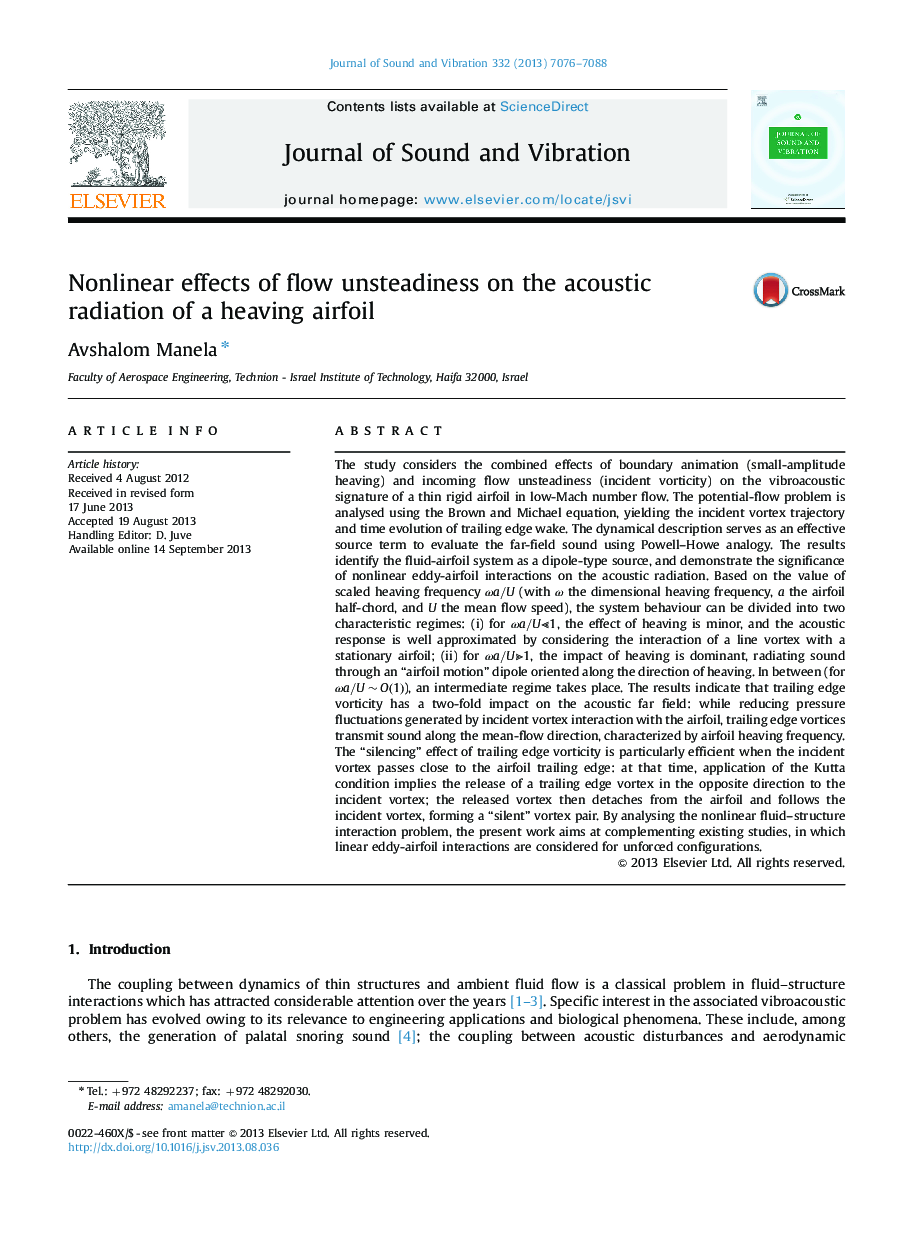| کد مقاله | کد نشریه | سال انتشار | مقاله انگلیسی | نسخه تمام متن |
|---|---|---|---|---|
| 10289258 | 509593 | 2013 | 13 صفحه PDF | دانلود رایگان |
عنوان انگلیسی مقاله ISI
Nonlinear effects of flow unsteadiness on the acoustic radiation of a heaving airfoil
ترجمه فارسی عنوان
اثرات غیر خطی عدم تثبیت جریان بر روی تابش آکوستیک هواپیما بارگیری
دانلود مقاله + سفارش ترجمه
دانلود مقاله ISI انگلیسی
رایگان برای ایرانیان
موضوعات مرتبط
مهندسی و علوم پایه
سایر رشته های مهندسی
مهندسی عمران و سازه
چکیده انگلیسی
The study considers the combined effects of boundary animation (small-amplitude heaving) and incoming flow unsteadiness (incident vorticity) on the vibroacoustic signature of a thin rigid airfoil in low-Mach number flow. The potential-flow problem is analysed using the Brown and Michael equation, yielding the incident vortex trajectory and time evolution of trailing edge wake. The dynamical description serves as an effective source term to evaluate the far-field sound using Powell-Howe analogy. The results identify the fluid-airfoil system as a dipole-type source, and demonstrate the significance of nonlinear eddy-airfoil interactions on the acoustic radiation. Based on the value of scaled heaving frequency Ïa/U (with Ï the dimensional heaving frequency, a the airfoil half-chord, and U the mean flow speed), the system behaviour can be divided into two characteristic regimes: (i) for Ïa/U⪡1, the effect of heaving is minor, and the acoustic response is well approximated by considering the interaction of a line vortex with a stationary airfoil; (ii) for Ïa/U⪢1, the impact of heaving is dominant, radiating sound through an “airfoil motion” dipole oriented along the direction of heaving. In between (for Ïa/U~O(1)), an intermediate regime takes place. The results indicate that trailing edge vorticity has a two-fold impact on the acoustic far field: while reducing pressure fluctuations generated by incident vortex interaction with the airfoil, trailing edge vortices transmit sound along the mean-flow direction, characterized by airfoil heaving frequency. The “silencing” effect of trailing edge vorticity is particularly efficient when the incident vortex passes close to the airfoil trailing edge: at that time, application of the Kutta condition implies the release of a trailing edge vortex in the opposite direction to the incident vortex; the released vortex then detaches from the airfoil and follows the incident vortex, forming a “silent” vortex pair. By analysing the nonlinear fluid-structure interaction problem, the present work aims at complementing existing studies, in which linear eddy-airfoil interactions are considered for unforced configurations.
ناشر
Database: Elsevier - ScienceDirect (ساینس دایرکت)
Journal: Journal of Sound and Vibration - Volume 332, Issue 26, 23 December 2013, Pages 7076-7088
Journal: Journal of Sound and Vibration - Volume 332, Issue 26, 23 December 2013, Pages 7076-7088
نویسندگان
Avshalom Manela,
